 In this topic, we will discuss about blasting. Blasting is an operation that engineers resort to in order to break the rock mass, and to facilitate the removal of the overburden material. Blasting is am operation that has safety, stability, and economical viability issues, and it’s a science itself.
In this topic, we will discuss about blasting. Blasting is an operation that engineers resort to in order to break the rock mass, and to facilitate the removal of the overburden material. Blasting is am operation that has safety, stability, and economical viability issues, and it’s a science itself.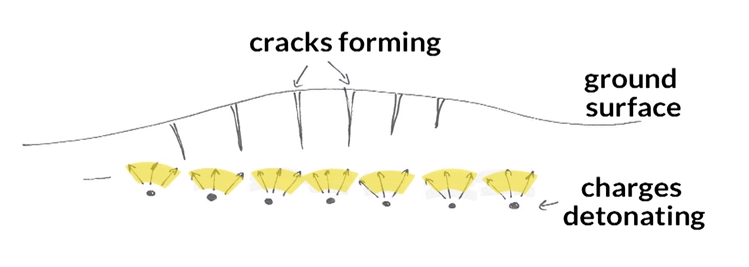
First of all, blasting requires explosives. Different explosives have different power and characteristics. In addition, we need other equipment like detonators and boosters to initiate, detonate, and sequence a blast appropriately, but this equipment is not covered here. But let’s see how the explosion leads to the rock breakage. The explosion is a chemical reaction that produces a shock wave and a large amount of gas that has high temperature and high pressure. The explosion leads to the rock breakage through three main steps that happen in a very short time.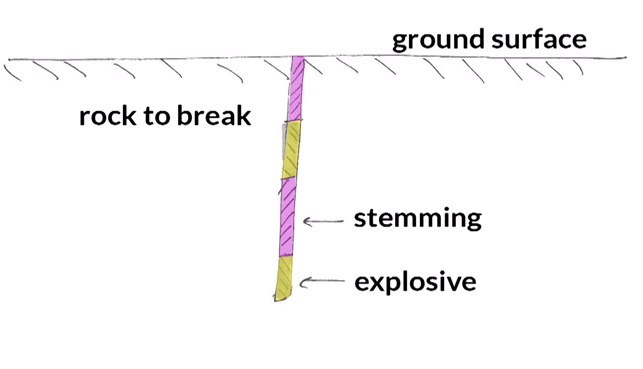
Firstly, the shock wave creates and expands the micro fractures in the rock mass and initiates the breaking process. Then the gas, expanding the drill hole under very high pressure, exacerbates the damage with the creation of radial cracking, as shown on this figure. The gas pushes on the rock to open and expand the cracks. Finally, the free rock face is pushed by the explosive gas and deflects due to the detonation front, creating some flexural cracks as shown on this figure.
This mechanism of breakage is best achieved if the explosives are confined in a rock. To do so, a hole is drilled in the rock and a series of explosives are lowered in the hole and stemming are placed in between and above the explosives to form a plug and confine the charge vertically. In this figure we can see one hole. But one charge is not enough, as large volumes of rock have to be dealt with in mining.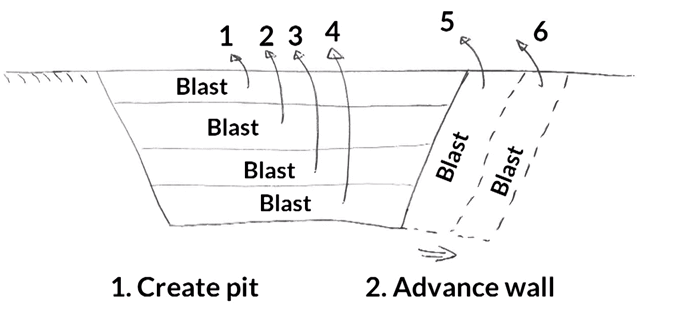
A series of charges is typically used for better performance, as you can guess from this photo. Here, blasting is used to remove the overburden material. The holes are not drilled in a random pattern, but they result from a specific study aiming at designing the following: the diameter and length of the holes in which the charges are places, the stemming length, the space in between the holes, the distance from the charges to the free face of the rock. In the concept of surface mine, blasting is used to create new free faces, but also to extend the faces in a later stage. This is illustrated in this figure, where stages one to four are used to lower the floor pit. Blast stages five and six are deployed to advance the wall. In all cases blasting has to be controlled in order to avoid blasting-induced damage of the rick left standing.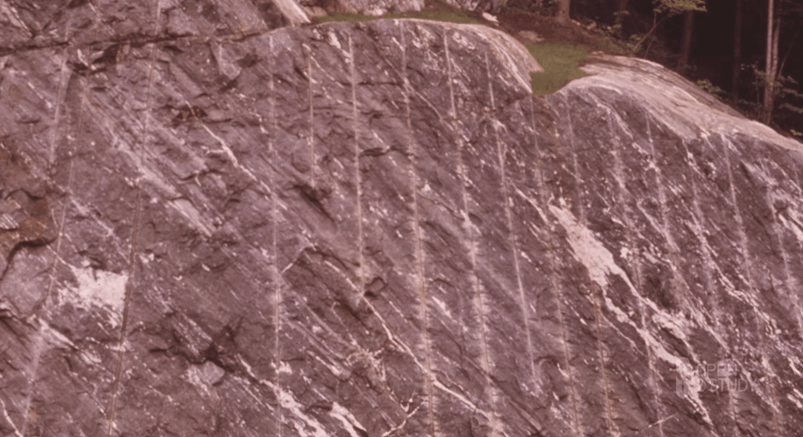
A solution to minimize the damage to the rock left standing is to spilt the rock first at the location of the wall before blasting the rock in front. The split will separate the undamaged rock constituting the wall from the material that will be removed. This line blasting operation is referred to as pre-splitting blasting. In this figure you can see the trace of the holes where the explosives were placed and the resulting quite smooth rock’s face. The presence of such half barrels is an indicator of reduced rock mass damage. There may exist some damage in the remaining rock mass. The idea behind a pre-splitting technique is to maintain an appropriate sequence of the detonation. For example, if we have a rock mass that is overlaying a coal seam that need to be mined, first we need to detonate the charges of the split in order to separate the rock mass that needs to be broken. Then, we have to detonate the charges to obtain the breakage of the rock mass. In this way the underlying seam coal can be mined. Timing of initiation is also important when trying to minimize the material handled in post-blasting.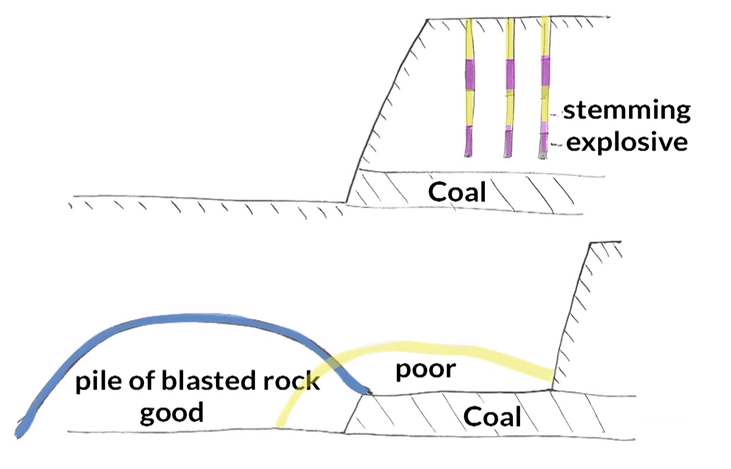
In this figure you can see a pile of rock created by blasting. If the initiation sequence and explosives are adequate, the rock is thrown away and forms the blue pile, giving access to the coal. This is referred to as cast blasting. If the timing is wrong, the yellow pile is formed, requiring the use of machinery and more material handling to get access to the coal. When designing blasting operation, rock characteristics such as strength and presence of discontinuity should also be accounted for, as they will govern the amount of energy required to break the rock.
To summarize, the key aspects of blasting are the release of the appropriate charges at the right time in order to obtain the good break mechanisms. It is beyond this course to discuss the methodology to design the blasting elements, but if you want more details about blasting, I suggest you go to the additional resources.
https://youtu.be/yzQMTvh-Zms
